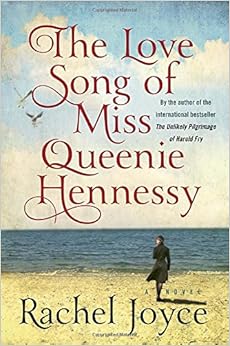Imagine if Vladimir Nabokov, having already written one novel from the point of view of Humbert Humbert had written another from the point of view of Delores, the girl we know as Lolita. Or suppose Mark Twain, after giving Huck's version of the raft trip down the Mississippi, had followed that with Jim's version. Would these second novels have been simply retellings of the first or entirely different stories?
Rachel Joyce doesn't make us wonder. She has followed her successful novel The Unlikely Pilgrimage of Harold Fry with The Love Song of Miss Queenie Hennessy, the story from the other perspective.
In the first novel, Harold Fry is a 65-year-old retiree who gets a letter from a woman he used to work with. Queenie Hennessy tells him she is dying of cancer in a hospice in the northern part of England. Harold immediately writes a note to her, tells his wife he is going out to mail it and sets out walking. Instead of mailing the letter, however, he keeps on walking, deciding that as long as he walks toward Queenie, she will continue to live.
The new novel finds Queenie, after hearing about Harold's odd pilgrimage, struggling to hang on because she thinks of Harold, though he doesn't know it, as the love of her life. While he walks, she composes her letter for him to read when he arrives, her confession of her love.
The earlier novel hints of a relationship between Queenie and David, Harold's son. This novel provides the details. David, though a brilliant boy, is deeply troubled. He steals from Queenie, lies to her, humiliates her and imposes himself on her when she'd rather be alone, yet she puts up with him only because he is Harold's son. She has never, until now, told Harold about even knowing David.
While Queenie thinks back on her life and her unrequited love (although Harold's long walk suggests it is not entirely unrequited), she also tells about life and death in the hospice. There is a stirring passage where other patients vow to stay alive and, like Queenie, wait for Harold to arrive. Sadly, the others don't make it. Yet Queenie, the woman who loves him, does.
I liked the earlier novel better, but I'm glad Joyce gave us readers the other side of the story, for it turns out to be entirely different.

No comments:
Post a Comment